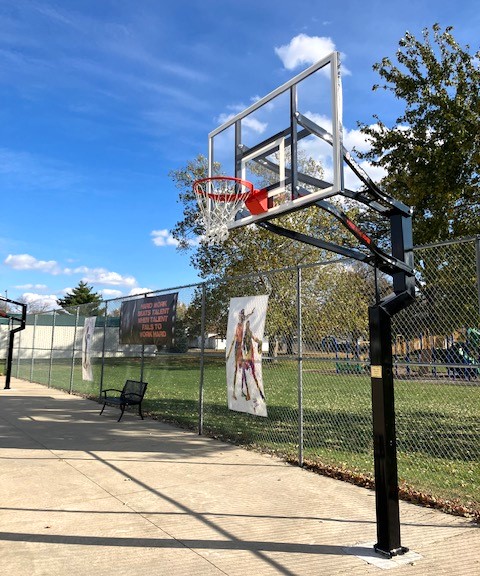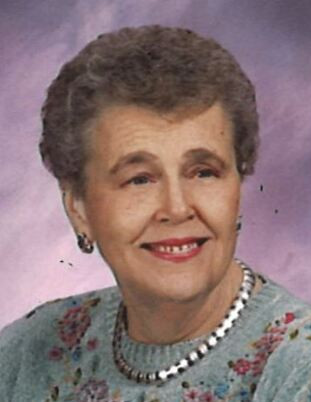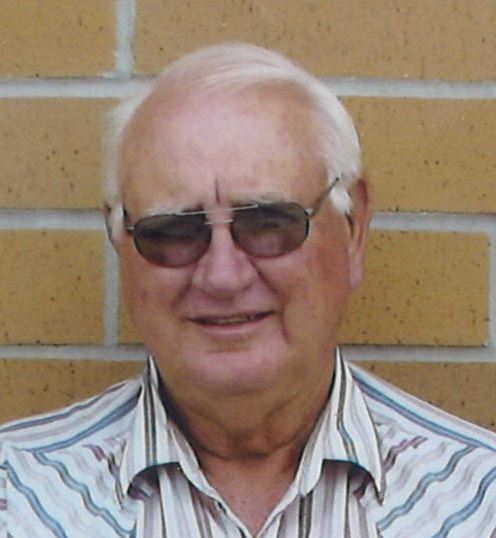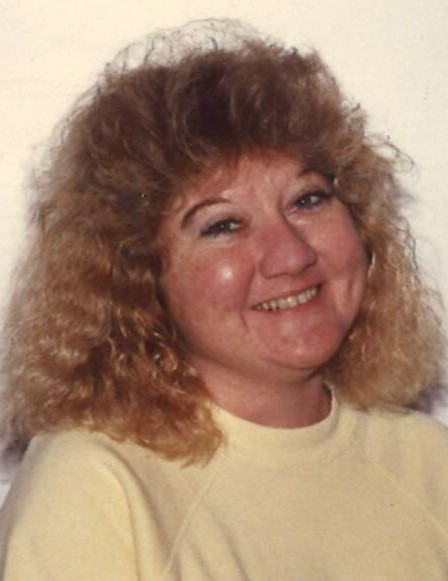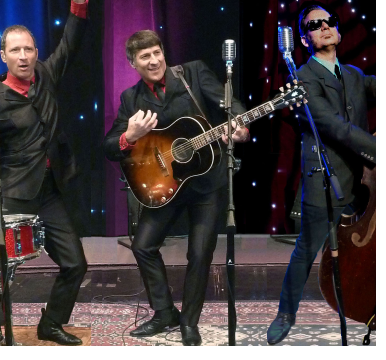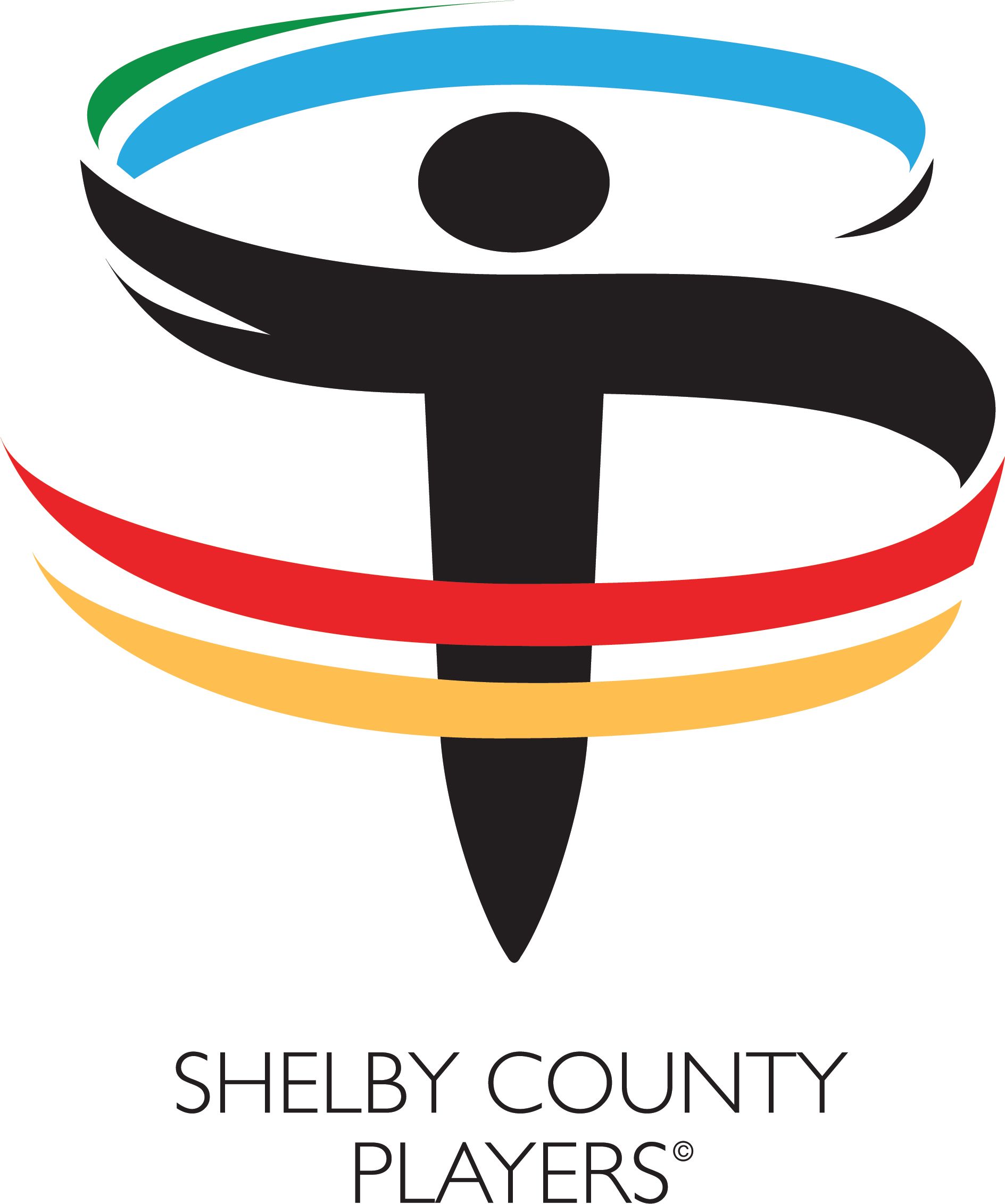The recent addition of two regulation basketball courts on the site of the former Morrison Park skate area has rekindled historic memories of other Shelbyville outdoor basketball courts where previous generations honed round ball skills and developed a true passion for the sport.
The installation of the new courts (photo), along with the existing one at Kennedy Park gives the community three full-sized, modern, high quality basketball venues.
A multitude of outside basketball courts throughout the community served as training grounds for local talent for more than three-quarters of a century. The Booker T. Washington School at the corner of Howard and Harrison Streets (photo, below) was constructed in 1869 and functioned as the school for black children until Shelbyville elementary schools were desegregated in 1949.
Bill Garrett, Marshall Murray and Emerson Johnson, black members of Shelbyville’s 1947 state championship team, grew up playing on the dusty outdoor court behind the school close to the railroad track. The school’s court was one of the few outdoor sites in town at the time.
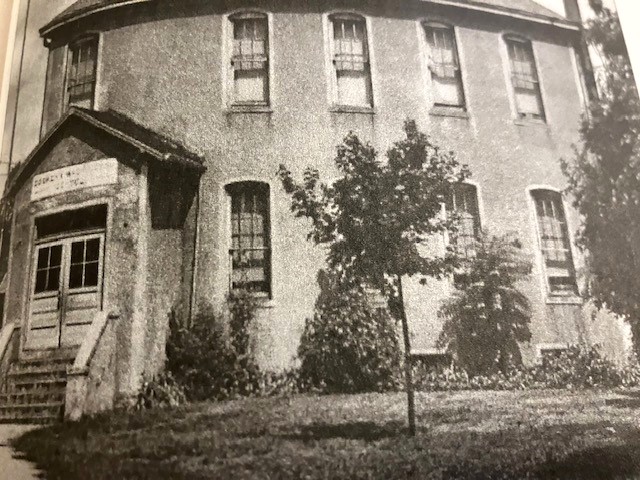
Shelbyville native Tom Graham, co-author of the book, “Getting Open: The Unknown Story of Bill Garrett and the Integration of College Basketball,” illustrated how significant the Booker T. court was to Garrett: “His life tuned to the thud and ping of a dog-eared basketball bouncing on packed dirt. He (Garrett) played basketball all summer and after school, shoveling snow off the court in the winter, often taking on older boys and grown men.”
Graham and his family resided on farm land just off the road of what is now Van Avenue. His father constructed a regulation asphalt lighted basketball court on the property in the early 1950s. Aspiring Golden Bear basketball players of later years were treated to a constant stream of stories about the games on “Graham’s Court” as it would become known.
“Among the first players on my family’s basketball court were Emerson Johnson, Marshall Murray and Bill Garrett’s brother Jim,” related Graham in his book, adding that the players saw the court as a marked improvement over the conditions at the old Booker T. Washington School.
The Booker T. Washington location closed as a school in 1949. The building and site were eventually donated to the Shelbyville Parks and Recreation Department who utilized it as a recreation center until it was razed in 1971.
Tom Graham received Shelbyville High School’s Paul Cross Basketball Award in 1961. He graduated from Indiana University and Harvard Law School and worked as an international trade lawyer. His book “Getting Open,” co-authored with daughter Rachel, was published in 2006.
1957 Shelbyville graduate Gary Long went to Shelby Township School for grades one through eight.
“We had no indoor gym so we practiced on an outdoor court,” said Long. “We played all our games on the road.”
Long confirms the historic legacy of Graham’s court: “I spent more time there than anywhere else during my youth. It seems like I was there every spare minute. Classmate George Stubbs Jr. and I would make plans to play there after church almost every Sunday. It was the only asphalt full court in town. It was such a great place to play. There was always a game there.”
“The competition was remarkable,” continued Long. “My cousin Ronnie Richardson was an excellent player and other cousins Dave Ross and Jerry Bass often came in from Morristown. Gordon Pope, who went on to play at Butler University, regularly came over from Greenfield.”
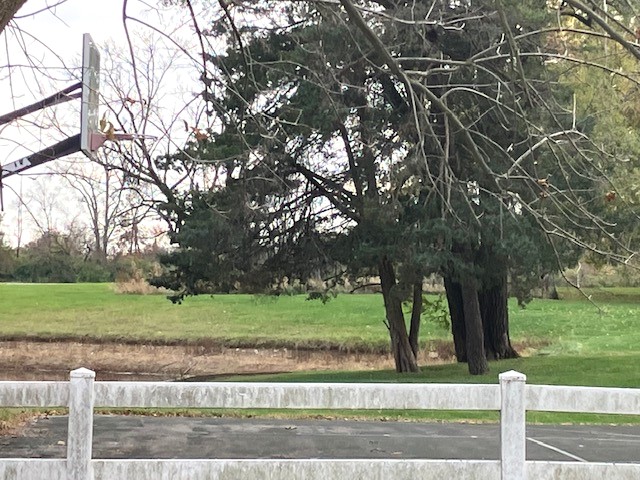
Jack Krebs and Jim and Jack Tindall were other outstanding Golden Bears who developed their games at Graham’s court (photo).
Long conveys his heartfelt appreciation to the Graham family for constructing the court and always being generous in allowing developing athletes the opportunity to make use of it. “I firmly believe that players having access to Graham’s court had a great deal to do with Shelbyville having so much basketball success in the 1950s. It sure was tremendously helpful to my basketball career.”
Long would go on to play at Indiana University and is a member of the Indiana Basketball Hall of Fame.
Tim Ash recalls riding his bike to play on Graham’s court when he was an elementary student.
“That was where everyone wanted to play,” said Ash. “Players who were older than I was played there and you wanted to watch them and be around them. Tom Graham, Tom Strawn, and the Tindall twins would play there. They were all 5-10 years older than I was but I saw them all play for Shelbyville and could not wait to get in a game with them.”
The outside courts at the junior high school also were a popular site.
“The courts faced Meridian Street and were located between the main school building and the building that housed Paul Cross Gym and the two shop wings,” said Ash. “There were no lights there but we would play there before school, at lunch and after school a lot. It was right in the school neighborhood so there were always people around to play. We had some great games there.”
Pearson and Hendricks Elementary Schools also had outside courts, though they were somewhat inferior in quality.
“They were functional but not as well maintained,” said Ash.
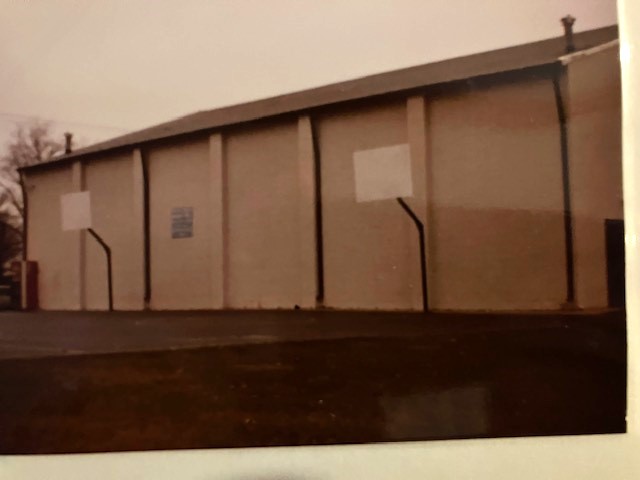
The Boys Club constructed a new club building on South Miller Street in 1960. In 1966, they created two full-sized, lighted asphalt basketball courts (photo) that were north and south in direction. The courts were completely lined with regulation dimensions and had solid wooden backboards and usually, chain nets.
“The outdoor Boys Club courts became the place to play,” said Ash. “That quickly came to be where the high school and older players came to compete in the 1960s and 1970s.”
That era featured some tremendous Shelbyville basketball talent who regularly demonstrated their skills on the outdoor Boys Club courts. Tim Ash was routinely joined by cousins Doug and Kim Ash, Steve Drake, Harry Larrabee, Jeff Lowe, and David and Johnny Randolph to name but a few.
Shelbyville players comprised the overwhelming majority of participants at the Boys Club courts during this period, however several Shelby County basketball standouts made their way to compete on the Miller Street courts as well.
“Sam Ingle and Mike Wells from Triton would come in to play sometimes as would Van McQueen from Southwestern,” said Ash.
“For the most part, gymnasiums were not made available during the spring and summer months during that time,” stated Ash. “You had to find outside places to play and there were many to choose from. As an adult, I played in outdoor tournaments and leagues in Kokomo, Indianapolis, Columbus, and Knightstown, for example.”
Ash, a 1968 SHS graduate, currently ranks third on the Golden Bears’ career scoring list and is the program’s fourth all-time leading rebounder.
Harry Larrabee was a 1970 Indiana High School All-Star and is Shelbyville’s second all-time career leading scorer.
“I spent countless hours playing basketball outside at the goal at my house, at the Morristown High School courts and the asphalt Marion Elementary court where I went to grade school,” said Larrabee. “I started working as director of the Boys Club T-league baseball program while I was in junior high. I lived nine miles away so I rode my Bike to the Club.
“At first, I would watch the older guys play outside and sprint onto the courts to put up a few shots before the next games started. When I began driving, I played with the high school and older players in the real competitive games. Steve Drake and I would stay after the full-court games broke up and play endless one-on-one matches. We would then head to A&W to down a quart of root beer.”
“The summer after my freshman year at Texas, I worked days at Compton’s Dairy as a delivery man,” continued Larrabee. “I would meet up with SHS players Mike Sipes, Brad Eads and Steve Lutes after work to play all evening. I have fond memories of playing on the outside courts in the summertime in Indiana.”
The University of Texas recognized Larrabee’s basketball achievements by inducting him into the Longhorn Athletic Ring of Honor in 2017.
The Boys Club’s outdoor courts became an integral addition to club programming as well. The Shelbyville boys basketball program hosted a six-week summer basketball camp each year with two-and-a-half hour sessions divided by grade in both the mornings and afternoons.
The inside gymnasium had limited ventilation and condensation would often develop on the tile floor during summer’s hottest days. For this reason, coaches would generally conduct game competitions on the outdoor courts.
The outside courts also provided the advantage of being able to play two full-court games simultaneously. The Shelbyville boys basketball staff held summer basketball at the Boys Club from 1966 through 1975. The Shelbyville girls program hosted its summer camp on the outdoor Boys Club courts from 1981-1984.
Bret Green and Zach Phelps were neighborhood youth who remember the Boys Club outdoor courts as being a major part of their childhoods.
“I was at the Boys Club all the time and I loved basketball so I spent a great deal of time on the outside club courts,” said Green, a 1982 SHS graduate. “In summer and fall you knew to get there around three on Sunday and people would stay around to play until nine or so. Julius Denton, Wendell Denton, Rick Moorhead (former Golden Bears standout players); they’d all be there. I often shot out there until 10 when the lights turned off. Sometimes even after that.”
Green’s outdoor basketball competition often extended to places outside Shelbyville.
“We had some great times playing at Riley Park in Greenfield and at Lincoln Park in Columbus,” said Green.
“Sunday nights were the big nights,” said Phelps. “Playing against the older guys made me a consistently better player. The competition was so good you knew you had to come ready to play every time. When I was in elementary and junior high I really liked it because I could shoot there at the Boys Club courts on Friday and Saturday nights, pretty much by myself. No one would be there then but during the week and on Sundays it was packed.”
Green became a fixture in local adult basketball circles and with teammates Todd Brokering and Mark Pierce won numerous major outdoor 3-on-3 tournaments in the region.
Phelps finished as one of the top 15 scorers in SHS history. He lettered four years at DePauw and was named conference player of the year in 1994.
The Boys Club courts were sacrificed for parking with the Boys and Girls Club’s 1993 expansion and renovation. Pearson and Hendricks schools closed in 1999 and apartments currently stand on the sites of their former playgrounds. A 1974 expansion built over much of the space occupied by the old junior high outdoor courts.
The glory days of outdoor basketball fell victim to progress. Gymnasiums became more abundant with the advent of athletic centers and schools being more willing to offer their facilities year-round. Travel and local basketball became increasingly more organized and even in the spring and summer, a consistently indoor proposition.
A basketball player’s development today is more structured: there are constant leagues, camps and clinics available as well as opportunities for individual instruction.
“There is so much scheduling and structure involved for today’s player trying to develop,” said Phelps, who also serves as a Golden Bears boys basketball assistant coach. “When I was growing up you had Boys Club leagues and travel basketball, summer basketball and school basketball. That was it. It was seasonal. The rest of your development was up to you. YOU had to cultivate the opportunities. You made yourself a player. That meant going where the courts were and that was most often outside.”
Hopefully, there will be a resurgence in interest for outdoor basketball and enthusiastic participants will make regular use of the high quality, state-of-the art courts at Morrison and Kennedy parks. I know that in doing so they will experience the same satisfaction and appreciation that has been enjoyed by so many Shelby County players of the past.
Get the most recent Shelby County Post headlines delivered to your email. Go to shelbycountypost.com and click on the free daily email signup link at the top of the page.

